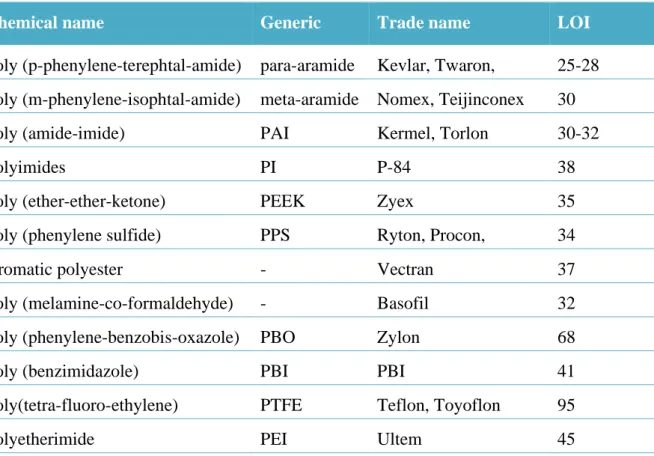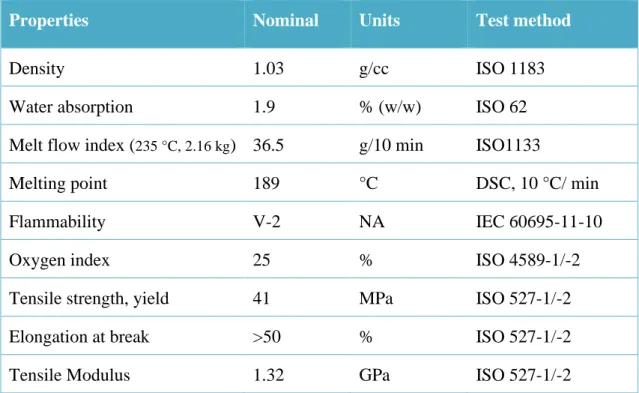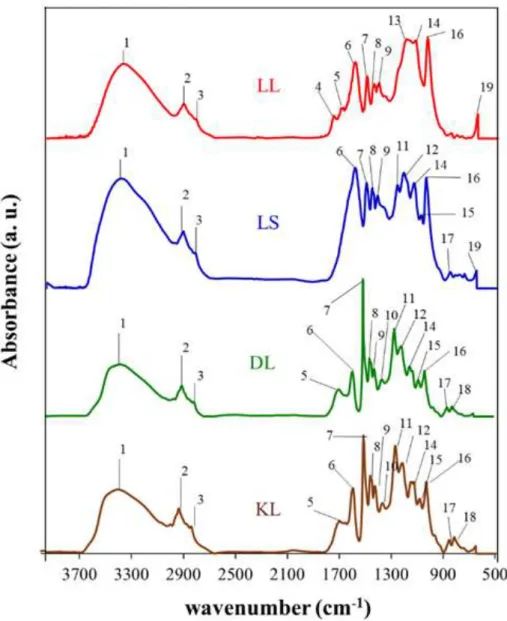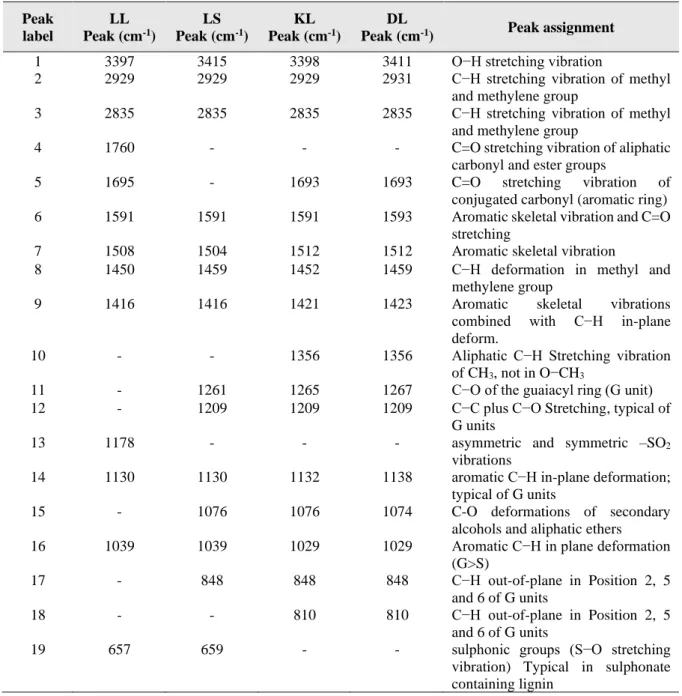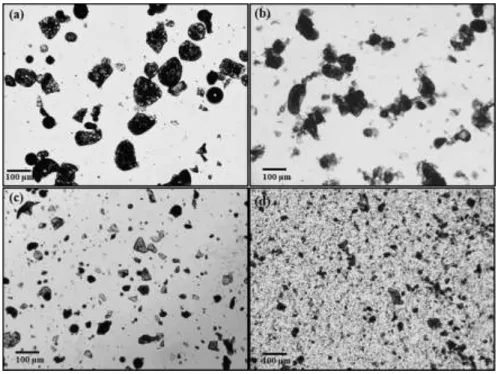Pépite | Intégration des déchets de bois pour développer une structure textile multifonctionnelle entièrement biosourcée
Texte intégral
(2) Thèse de Neeraj Kumar Mandlekar, Université de Lille, 2019. Integration of wood waste to develop multifunctional fully biobased textile structure Ph.D. Thesis defended at. L’UNIVERSITE DE LILLE Ecole doctorale des Sciences Pour l’Ingénieur (EDSPI) by. Neeraj Kumar MANDLEKAR in partial fulfilment of Erasmus Mundus joint Doctorate program: SMDTex – Sustainable Management and Design for Textiles. in collaboration with. ENSAIT, GEMTEX – Laboratoire de Génie et Matériaux Textiles, France University of Lille – Department of Materials and Mechanics, France Politecnico di Torino – Department of Chemical Engineering, Italy Soochow University – Department of Textile Engineering, China. © 2019 Tous droits réservés.. lilliad.univ-lille.fr.
(3) Thèse de Neeraj Kumar Mandlekar, Université de Lille, 2019. Abstract This thesis work was developed within the Erasmus Mundus SMDTex (sustainable management and design for textile) project, which aims to promote sustainable processes and materials for designing the textile. In this context, it has been chosen to study valorization of low-cost industrial lignin as additive in designing the flame retardant (FR) system for polyamide 11 (PA) to develop biobased textile structure. The main focus of this thesis work is to consider lignin as carbon source and introduce in a textile structure in combination with phosphinate FR. In the primary study, chemically different industrial (e.g., Domsjo lignosulphonate (LL) and Domtar kraft (DL)) and laboratory grade (e.g., Low sulphonate kraft (LS) and Alkali kraft (KL)) lignins were incorporated in PA by extrusion to investigate the char forming ability and fire retardant behaviour of the prepared binary blends. TG analyses showed a slow degradation of sulphonated lignin (LL and LS) blends due to the evolution of less organic products and the presence of sulphonate groups in LL and LS was responsible for the formation of a thermally stable higher amount of char residue. Unlike sulphonated lignins, the presence of kraft lignins (DL and KL) generate a lower amount of char residue due to the presence of less thermally stable lignin subunits that produce more volatile products during degradation. In addition, cone calorimeter tests showed the introduction of sulphonated lignins significantly reduced the peak of the heat release rate (PHRR) and of the total heat release (THR), and a noticeable increase in the final char residue was observed with an increased lignin content of 20 wt%. In the next approach, lignin was exploited as carbon source in combination with commercially available phosphinate FR (i.e., ZnP and AlP). To achieve this objective, a preliminary study carried out with laboratory grade lignin (LS) combined with ZnP to investigate the thermal stability and fire performance as well as the possible synergy between lignin and ZnP and with the polymer matrix. The results obtained in this study permitted to i © 2019 Tous droits réservés.. lilliad.univ-lille.fr.
(4) Thèse de Neeraj Kumar Mandlekar, Université de Lille, 2019. continue further, the practical implementation of lignin and multifilament production. In the next step, flame retarded blends were developed with direct addition of low-cost industrial lignins (LL and DL) with phosphinate FR. For the systematic understanding, various FR formulations were developed by varying the lignin and FR loading and characterized. Thermal decomposition analysis showed that the presence of lignin decreases the initial decomposition temperature (T5%), but the maximum decomposition temperature (Tmax) shifts to higher temperature region, at this stage the formation of phenolic, carbonyls, hydrocarbons and CO2 along with phosphinate compounds occurs. Meanwhile, in the condensed phase thermally stable aromatic charred layer is formed because of lignin decomposition and phosphate compounds formation due to the presence of phosphinate metal salt. A higher amount of char residue is obtained when LL combined with ZnP/AlP as compared to the DL and ZnP/AlP blends. It is assumed that, during decomposition of LL, the sulfonate compounds release SO2 and transformed into thermally stable Na2SO4, hence giving rise to the stable char residue. The fire properties were assessed by cone calorimeter tests revealed that the combination of lignin and phosphinate FR significantly reduced the PHRR and other firerelated parameters due to the formation of a protective char layer. The presence of lignin not only improve the fire retardancy but also reduced the evolution of carbon monoxide (CO). More enhanced fire retardant properties were obtained with LL and ZnP/AlP combination reaches to 10 wt% in ternary blends, which not only promotes char formation but also confer the stability to char in the condensed phase. Furthermore, the most enhanced forced combustion results were obtained with LL and AlP (in particular, PA80-LL10-AlP10). Multifilament yarns were successfully produced for PA-DL-ZnP and PA-LL-ZnP combinations. However, the blends of AlP with lignin were not spinnable because of low compatibility and dispersion level of AlP in the polymer. Optical microscopy and tensile tests ii © 2019 Tous droits réservés.. lilliad.univ-lille.fr.
(5) Thèse de Neeraj Kumar Mandlekar, Université de Lille, 2019. were performed to study the physical properties of multifilaments. A double layer (interlock structure) knitted fabrics were developed to evaluate fire behaviour analysis on fabric samples. In summary, this work confirms that industrial lignin can be directly used in the polymer matrix and offers the possibility of developing biobased fire retardant textile. The concept of developing biobased flame retardant composite and the textile structure was an attempt to reduce the dependency on oil-based resources and to develop the non-halogenated flame retardant with the favorable environmental profile. It was possible to gain the biobased character up to 90 wt% in the final product.. iii © 2019 Tous droits réservés.. lilliad.univ-lille.fr.
(6) Thèse de Neeraj Kumar Mandlekar, Université de Lille, 2019. Résumé Ce travail de thèse a été réalisé dans le cadre du projet Erasmus Mundus SMDTex (Sustainable Management and Design for Textile), qui vise à promouvoir des procédés et des matériaux durables pour la conception du textile. Dans ce contexte, il a été choisi d’étudier la valorisation de la lignine industrielle à faible coût en tant qu’additif retard au feu (FR) du polyamide 11 (PA) afin de développer une structure textile biosourcée. L'objectif principal de cette thèse est de considérer la lignine comme source de carbone carbone permettant de créer un bouclier protecteur (char) sous l’effet d’un flux thermique et de l'introduire dans une structure textile en combinaison avec du phosphinate (agent FR) Dans un premier temps, deux lignines industrielles (lignosulfonate de Domsjo (LL) et Domtar kraft (DL) de qualités différentes) et deux deux lignines de qualité laboratoire (kraft à faible teneur en sulfonate (LS) et alkali kraft (KL)) ont été incorporées par extrusion au PA afin de comparer leur propriété FR et leur aptitude à la formation de char. Les analyses thermogravimétriques des mélanges binaires ont montré que la lente dégradation des lignines sulfonée (LL et LS) et la présence de leur groupe sulfonate entraîne la formation d’une quantité supérieure de résidu carboné thermiquement stable. Contrairement aux lignines sulfonées, la présence de lignines kraft (DL ou KL) génère une quantité plus faible de résidu carboné en raison de la présence de sous-unités de lignine moins stables thermiquement qui produisent des produits plus volatils lors de la dégradation. En outre, des tests au calorimètre à cône ont montré que l'introduction de lignines sulfonées réduisait de manière significative le pic de dégagement de chaleur (PHRR) et le dégagement total de chaleur (THR), et qu'une augmentation notable du résidu carboné était observée avec un taux de 20% en poids de lignine. Dans un deuxième temps, la lignine a été exploitée en tant que source de carbone en combinaison avec du phosphinate de zinc (ZnP) ou d’aluminium (AlP) disponibles dans le commerce. Pour atteindre cet objectif, une étude préliminaire a été réalisée avec la lignine de iv © 2019 Tous droits réservés.. lilliad.univ-lille.fr.
(7) Thèse de Neeraj Kumar Mandlekar, Université de Lille, 2019. laboratoire LS combinée à du ZnP, afin d'étudier la stabilité thermique et les performances au feu, ainsi que les synergies possibles entre la lignine, le ZnP et le PA. Dans l'étape suivante, des mélanges ignifugés ont été développés avec l’addition directe de lignines industrielles à faible coût (LL et DL) et d’agents ignifuges phosphinatés. Pour la compréhension systématique, diverses formulations de FR dans le PA ont été développées en faisant varier le taux de charge en lignine et en FR et ont été caractérisées. L’analyse de la décomposition thermique a montré que la présence de lignine abaisse la température initiale de décomposition (T5%) compte tenu de la décomposition de la lignine qui débute à une plage de température inférieure avec l’évolution de composés thermiquement moins stables, et la température maximal de décomposition (Tmax) est déplacée à une plage de température plus élevée, car à ce stade se produit la formation de composés phénoliques, carbonylés, hydrocarbures et de CO2, ainsi que de composés phosphinates. Pendant ce temps, il se forme dans la phase condensée une couche carbonée aromatique thermiquement stable, en raison de la décomposition de la lignine et de la formation de composés phosphates issus de la décomposition du sel métallique de phosphinate. On obtient une plus grande quantité de résidu carboné lorsque la LL est combiné avec ZnP/AlP par rapport aux mélanges de DL et ZnP/AlP. Il est supposé que, lors de la décomposition de la LL, les composés sulfonates libèrent du SO2 et se transforment en Na2SO4 thermiquement stable, donnant ainsi lieu au résidu de carbonisation stable. Les propriétés au feu ont été évaluées par un calorimètre à cône. Les essais ont révélé que la combinaison de lignine et d’agents ignifuges phosphinatés réduisait de manière significative le PHRR et autres paramètres liés au feu de par la formation d’une couche carbonée protectrice. La présence de lignine améliore non seulement la résistance au feu, mais réduit également le dégagement de monoxyde de carbone (CO). Des propriétés ignifuges améliorées ont été obtenues avec la combinaison LL et ZnP/AlP atteignant 10% en poids dans v © 2019 Tous droits réservés.. lilliad.univ-lille.fr.
(8) Thèse de Neeraj Kumar Mandlekar, Université de Lille, 2019. les mélanges ternaires, par la formation d’une couche carbonée thermiquement résistante et efficace pour protéger le reste de la phase condensée. De plus, les meilleurs comportements au feu pour le PA ont été obtenus avec les mélanges LL et AlP, en particulier, avec 10% en masse de chaque charge. Des multifilaments ont été produits avec succès pour les combinaisons PA-DL-ZnP et PA-LL-ZnP. Toutefois, les mélanges de AlP avec de la lignine n’étaient pas filables en raison de la faible compatibilité et du faible niveau de dispersion du AlP dans le polymère. Des observations au microscopie optique et des tests de traction ont été réalisés pour étudier les propriétés physiques des multifilaments. Des structures tricotées (interlock) ont été produites à partir des différents multifilaments pour évaluer leur comportement au feu. En résumé, ces travaux confirment que la lignine industrielle peut être directement utilisée dans la matrice polymère et offre la possibilité de développer un textile ignifuge biosourcé, réduisant ainsi la dépendance vis-à-vis des ressources fossiles. Il est possible d'obtenir le caractère biosourcé jusqu’à 90% en poids dans le produit final.. vi © 2019 Tous droits réservés.. lilliad.univ-lille.fr.
(9) Thèse de Neeraj Kumar Mandlekar, Université de Lille, 2019. 中文摘要 本研究工作依托Erasmus Mundus SMDTex (纺织品可持续管理和设计)项目展开, 旨在促进纺织品设计过程中工艺和材料的可持续性。在此背景下,本论文选用成本较 低的工业化木质素作为添加剂提高聚酰胺11的阻燃性能,从而实现木质素的高值化利 用。本论文主要利用木质素作为炭源与阻燃剂次膦酸盐结合提高纺织材料的阻燃性 能。文中首先通过挤出法将化学结构不同的工业木质素(i.e., Domsjo lignosulphonate (LL) and Domtar kraft (DL))和实验室用木质素(low sulphonate kraft (LS) and Alkali kraft (KL))与聚酰. 胺分别共混挤出双组分混合物,并探究双组分复合物的成炭性和阻燃性能。热分析结 果表明,磺化木质素(LL和LS)在加热过程中释放的有机物质较少,且磺化基团的存在 使得LL和LS具有较高的残炭量,因此磺化木质素复合材料的热分解较为缓慢。与磺化 木质素不同,木质素硫酸盐DL和KL中热稳定的木质素结构较少,在加热过程中产生 较多的挥发性物质,因此木质素DL和KL的加入导致复合材料成炭较少。此外,磺化 木质素的加入可明显降低材料的热释放速率(PHRR)和热释放总量(THR),并提高材料 的残炭量。 接着,采用木质素作为炭源与商业化的阻燃剂次膦酸盐(如ZnP和AlP)相结合提高 材料的阻燃性能。因此,在前期实验中利用实验室用木质素(LS)与ZnP相结合制备阻燃 体系,并对复合材料的热稳定性、阻燃性能以及木质素、ZnP和基质材料间可能存在 的协同效应进行探究。根据上述研究的结果进行下一步木质素和复丝的实际生产。随 后,通过直接添加低成本的工业木质素(LL和DL)与次膦酸盐阻燃剂制备阻燃复合材 料。通过改变木质素和次膦酸盐阻燃剂的添加比例对阻燃体系的阻燃性能进行系统的 探究。 热分析结果表明,木质素的存在导致材料的初始热分解温度(T5%)降低,因为木质 素的初始分解温度较低,分解产生热稳定性低的化合物,最大热分解时对应的温度 (Tmax)向高温区域移动,而在此阶段木质素分解产生一系列酚类、羰基化合物、碳氢化 合物、CO2和磷酸盐化合物。与此同时,木质素和次膦酸金属盐分解生成磷酸盐化合 物,导致固相中产生热稳定性高的芳香炭层。与DL和ZnP/AlP共混物相比,LL和 ZnP/AlP共混物的残炭量更高,因为LL的磺酸基在热分解过程中释放SO2并转化成热稳 定的Na2SO4,促进热稳定残炭的形成。. vii © 2019 Tous droits réservés.. lilliad.univ-lille.fr.
(10) Thèse de Neeraj Kumar Mandlekar, Université de Lille, 2019. 通过锥形量热仪测试对材料的阻燃性能进行评价,结果表明由于保护性炭层的形 成,木质素和次膦酸盐阻燃剂相结合可明显降低材料的最大热释放速率和其它火灾危 险性相关参数。木质素的存在不仅改善了材料的阻燃性能,也降低了一氧化碳的释 放。当LL和ZnP/AlP阻燃体系的添加量为10wt%时可促进热稳定性残炭的形成,复合材 料可获得较高的阻燃性能。此外,当LL和AlP相结合作为阻燃体系时,复合材料(特别 是PA80-LL10-AlP10)阻燃性能的提高更为明显。 本研究成功地制备了PA-DL-ZnP和PA-LL-ZnP复合尼龙丝。但由于AlP在聚合物中 的相容性和分散性较低,AlP与木质素的共混物无法用于纺丝。利用光学显微镜和拉伸 试验对复合丝的物理性能进行探究。通过制备双层(互锁结构)针织物以评价相关纺织 材料的阻燃性能。 综上,本研究证明工业木质素可直接与聚合物混合,并为生物基阻燃纺织材料的 开发提供可能。生物基阻燃复合材料和纺织材料的开发有助于降低对石油资源的依 赖,有助于开发环境友好型的无卤阻燃剂。最终产品的生物基特征可高达90 wt%。. viii © 2019 Tous droits réservés.. lilliad.univ-lille.fr.
(11) Thèse de Neeraj Kumar Mandlekar, Université de Lille, 2019. Acknowledgments PhD study through SMDTex program was one of the most memorable journeys of my life. I would like to thank all of them who helped me directly or indirectly. First of all, I would like to express my gratitude to my supervisors and co-supervisors from all three mobility; Prof. Fabien Salaun, Dr. Stephene Giraud, Dr. Francois Rault and Dr. Aurelie Cayla from ENSAITGEMTEX, who guided me to the right direction, to begin with, this research. It is greatly fortunate for me to have them as the advisor of the Ph.D thesis. I would also like to thank Prof. Giulio Malucelli and Fabio Cuttica for providing lab facility for fire characterization at Politecnico di Torino. I would also like to thank Prof. jinping Guan and Prof. Yan Chen for their research guidance not only in Soochow University but also in previous mobilities. I would like to express my thanks to all the staff of ENSAIT and the GEMTEX, in particular to Guillaume Lemort and Sabine for their technical support. I would like to sincerely thanks to Marie Hombert for helping to go through non-technical issues during my first mobility in ENSAIT, Roubaix, France. Furthermore, I would like to express my thanks to Dr. Hans Grundberg and Dr. Kristina from Domsjo Fabriker AB, Sweden and Dr. Christian Hubsch from UPM Biochemicals for kindly providing industrial lignin for this research project. Special thanks to my SMDTex colleagues, Jagadish Roy, Vijay Kumar, Sohail Yasin, Tarun Agarwal, Parag Bhavsar, Sweta Iyer for having a technical conversation and discussing our research. I would appreciate and thanks to friends whom I met during my PhD journey, Hossein, Maria, Sheenam, Melissa, Edwin, Ajinkya, Matia, Yuyang, Justin and Dr. Hong Last but not least, deepest gratitude to my family! Thanks to my lovely wife Sujata and adorable son Atharva, for accompanying and supporting me. Thanks to my parents for their endless and unconditional understanding, encouragement and love. ix © 2019 Tous droits réservés.. lilliad.univ-lille.fr.
(12) Thèse de Neeraj Kumar Mandlekar, Université de Lille, 2019. Table of Content General introduction ....................................................................................................... 2 1. STATE OF THE ART ........................................................................................... 11 1.1.. Introduction ......................................................................................................... 12. 1.2.. Polymer flame retardancy .................................................................................. 14. 1.2.1.. The combustion process in general .................................................................... 14. 1.2.2.. Flame retardants mode of action ........................................................................ 15. 1.2.3.. Flame retardant classification ............................................................................ 18. 1.2.4.. Halogenated flame-retardant additives .............................................................. 19. 1.2.5.. Char promoting flame retardants ....................................................................... 21. 1.3.. Lignin as biobased material ................................................................................ 29. 1.3.1.. Lignin as wood component ................................................................................ 29. 1.3.3.. Lignin extraction processes................................................................................ 32. 1.3.4.. Lignin incorporation in polymer materials ........................................................ 37. 1.4.. Lignin as fire retardant additive ........................................................................ 39. 1.4.1.. Process of thermal decomposition ..................................................................... 39. 1.4.2.. Temperature ranges and kinetics of thermal decomposition ............................. 39. 1.4.3.. Mechanism and evolved product of thermal decomposition ............................. 41. 1.4.4.. Lignin as Char former ........................................................................................ 42. 1.4.5.. Lignin as FR additive in the polymer system .................................................... 44. 1.4.6.. Polyamide 11: Preparation and flame retardancy .............................................. 49. 1.5.. The strategy of FR treatment for textile ............................................................ 53. 1.5.1.. High-performance fibres .................................................................................... 53. 1.5.2.. Flame retardant finishing ................................................................................... 54. 1.5.3.. Flame retarding fibres with additives ................................................................ 55. 1.6.. Conclusion and strategy ...................................................................................... 58. References ........................................................................................................................... 60. 2. MATERIALS AND METHODS ......................................................................... 76 2.1.. Materials ............................................................................................................... 77. 2.1.1.. Polymer matrix................................................................................................... 77. 2.1.2.. Lignin ................................................................................................................. 78. 2.1.3.. Flame retardant additives ................................................................................... 79 x. © 2019 Tous droits réservés.. lilliad.univ-lille.fr.
(13) Thèse de Neeraj Kumar Mandlekar, Université de Lille, 2019. 2.2.. Material processing ............................................................................................. 81. 2.2.1.. Extrusion ............................................................................................................ 81. 2.2.2.. Preparation of blends ......................................................................................... 82. 2.2.3.. Fibrous material preparation .............................................................................. 85. 2.3.. Characterization methods ................................................................................... 87. 2.3.1.. Melt Flow Index ................................................................................................. 87. 2.3.2.. Mechanical properties ........................................................................................ 88. 2.3.3.. Microscopic analysis .......................................................................................... 89. 2.3.4.. Differential scanning calorimetry ...................................................................... 90. 2.3.5.. FTIR analysis ..................................................................................................... 90. 2.3.6.. Thermogravimetric analysis............................................................................... 91. 2.3.6.1. Cone calorimeter tests by oxygen consumption ................................................ 93 2.3.6.2. Mass loss cone calorimeter ................................................................................ 95 2.3.7. 2.4.. UL94 vertical flame spread test ......................................................................... 95 Characterization of raw material ....................................................................... 96. 2.4.1.. Characterization of Lignin ................................................................................. 96. 2.4.2.. Thermogravimetric analysis of phosphinates .................................................. 103. References ......................................................................................................................... 105. 3. DEVELOPMENT OF BINARY BLENDS......................................................107 3.1.. Introduction ....................................................................................................... 108. 3.2.. Morphology of binary blends ........................................................................... 109. 3.3.. Thermal stability and decomposition study .................................................... 110. 3.3.1.. Thermal properties by DSC ............................................................................. 110. 3.3.2.. Effect of lignins on the thermal stability of PA blends .................................... 111. 3.3.3.. Influence of lignin content on the thermal stability of PA blends ................... 114. 3.4.. Analysis of fire properties ................................................................................. 116. 3.4.1.. UL94 vertical flame spread test ....................................................................... 116. 3.4.2.. Forced combustion test .................................................................................... 118. 3.4.3.. Morphology of char residue ............................................................................. 121. 3.5.. Conclusion .......................................................................................................... 123. References ......................................................................................................................... 125. 4. DEVELOPMENT OF TERNARY BLENDS .................................................127 4.1. 4.1.1.. Combination of laboratory grade lignin and ZnP .......................................... 129 Dispersion analysis by SEM ............................................................................ 129 xi. © 2019 Tous droits réservés.. lilliad.univ-lille.fr.
(14) Thèse de Neeraj Kumar Mandlekar, Université de Lille, 2019. 4.1.2.. Thermal decomposition analysis...................................................................... 130. 4.1.3.. Analysis of evolved gas ................................................................................... 132. 4.1.4.. UL94 vertical flame spread test ....................................................................... 137. 4.1.5.. Analysis of fire properties ................................................................................ 138. 4.1.6.. Char Residue analysis ...................................................................................... 144. 4.1.7.. Conclusion ....................................................................................................... 147. 4.2.. Combination of industrial lignins and phosphinates FR ............................... 149. 4.2.1.. Dispersion analysis by SEM ............................................................................ 149. 4.2.2.. Mechanical properties ...................................................................................... 151. 4.2.3.. Thermal decomposition analysis...................................................................... 153. Conclusion about TG analysis ........................................................................................ 160 4.2.4.. UL94 vertical flame spread test ....................................................................... 161. 4.2.5.. Analysis of fire properties ................................................................................ 163. 4.2.6.. Char residue morphology ................................................................................. 168. 4.2.7.. Conclusions ...................................................................................................... 171. References ......................................................................................................................... 173. 5. DEVELOPMENT AND STUDY OF FIRE RETARDANT FABRICS.....176 5.1.. Melt fluidity ........................................................................................................ 177. 5.1.1.. Melt fluidity of lignin and ZnP blends ............................................................. 177. 5.1.2.. Melt fluidity of lignin and AlP blends ............................................................. 178. 5.2.. Melt spinning and development of multifilaments ......................................... 179. 5.2.1.. Spinning trials of ZnP and lignin-containing blends ....................................... 181. 5.2.2.. Spinning trials of AlP and lignin-containing blends ........................................ 182. 5.3.. Analysis of multifilaments................................................................................. 182. 5.3.1.. Microscopic analysis ........................................................................................ 183. 5.3.2.. Analysis of mechanical properties ................................................................... 185. 5.4.. Fire behaviour analysis on fabric ..................................................................... 186. 5.5.. Conclusion .......................................................................................................... 190. References ......................................................................................................................... 191. 6. GENERAL CONCLUSION AND FUTURE STUDIES...............................192 6.1.. General Conclusion ........................................................................................... 193. 6.2.. Future studies ..................................................................................................... 197. References ......................................................................................................................... 201. Appendix........................................................................................................................202 xii © 2019 Tous droits réservés.. lilliad.univ-lille.fr.
(15) Thèse de Neeraj Kumar Mandlekar, Université de Lille, 2019. List of abbreviation ABS. Acrylonitrile Butadiene Styrene. AEL. Alkaline enzymatic lignin. AL. Acidolytic lignin. AlP. Aluminium diethyl phosphinate. AMLR. Average mass loss rate. APP. Ammonium polyphosphate. ARHE. Average rate of heat emission. DL. Domtar kraft lignin. DSC. Differential scanning calorimetry. dTG. Derivative thermogravimetry. EDX. Energy dispersive X-rays. EHC. Effective heat combustion. FR. Flame retardant. FRs. Flame retardants. FTIR. Fourier transform infrared. HRR. Heat release rate. IL. Ionic liquid. KL. Kraft lignin. LL. Lignosulphonate lignin. LOI. Limiting oxygen index. LPMC. Lignin-based phosphate melamine. LS. Low sulphonate alkali lignin compound MARHE Maximum average rate of heat emission MC. Melamine Cyanurate. MCAPP. Microencapsulated ammonium. MFI MMLR. Melt flow index polyphosphate Maximum mass loss rate. MPP. Melamine Polyphosphate. xiii © 2019 Tous droits réservés.. lilliad.univ-lille.fr.
(16) Thèse de Neeraj Kumar Mandlekar, Université de Lille, 2019. OM. Optical microscopy. OMMT. Organically modified montmorillonite. PA. Polyamide 11. PA 6,6. Polyamide 6,6. PA6. Polyamide 6. PBS. Polybutylene succinate. PBT. Polybutylene terephthalate. PET. Polyethylene terephthalate. PHB. Polyhydroxy butyrate. PHRR. Peak of heat release rate. PLA. Polylactic acid. PMMA. Polymethylmethacrylate. POSS. Polyhydral Oligomeric Silsequioxane. PP. Polypropylene. PU. Polyurethane. SEA. Specific extinction area. SEM. Scanning electron microscopy. TG. Thermogravimetric. TGA. Thermogravimetric analysis. THR. Total heat release. TSR. Total smoke release. TTI. Time to ignition. ZnB. Zinc borate. ZnP. Zinc bis-diethyl phosphinate. xiv © 2019 Tous droits réservés.. lilliad.univ-lille.fr.
(17) Thèse de Neeraj Kumar Mandlekar, Université de Lille, 2019. List of symbols ∆Hc. Enthalpy of crystallization. ∆Hm. Enthalpy of fusion. µm. Micrometer. T5%. Temperature at 5% weight loss. Tc. Temperature of crystallization. Tm. Melting temperature. Tmax. Temperature of maximum rate of weight loss. Tmax1. First degradation temperature in TGA in air. Tmax2. Second degradation temperature in TGA in. Xc. Degree of crystallinity air. xv © 2019 Tous droits réservés.. lilliad.univ-lille.fr.
(18) Thèse de Neeraj Kumar Mandlekar, Université de Lille, 2019. List of figures Figure 0.1. Global flame retardants market by additives. .......................................................... 3 Figure 0.2. Numbers of publications per year in last 20 years for FR textile… ........................ 4 Figure 1.1. Combustion process and flame spread phenomena. .............................................. 14 Figure 1.2. The fire triangle. .................................................................................................... 15 Figure 1.3. Schematic illustration of the potential mode of FR action. ................................... 16 Figure 1.4. Mode of action of the intumescent system. ........................................................... 23 Figure 1.5. A general structure of metal phosphinate. ............................................................. 25 Figure 1.6. Decomposition pathway of the formulation PBT/Al or Zn phosphinate. ............. 28 Figure 1.7. The three main precursors of lignin (monolignols) and their corresponding structures. ................................................................................................................................. 31 Figure 1.8. Different extraction processes to separate lignin from lignocellulosic biomass and the corresponding technical lignins. ........................................................................................ 33 Figure 1.9. Current and the potential applications of the lignin. ............................................. 37 Figure 1.10. Temperature ranges for lignin fragmentation. ..................................................... 39 Figure 1.11. Thermal degradation of various lignins followed by TGA (10 °C/min, Helium gas flow)................................................................................................................................... 40 Figure 1.12. Overview of the decomposition product evolving during lignin’s thermal decomposition. ......................................................................................................................... 42 Figure 1.13. FTIR spectra of the manchurian ash lignin treated at different temperatures. .... 44 Figure 2.1. TG (black line) and dTG (blue line) curves for polyamide11 (PA) in N2 and 10 °C/min. ..................................................................................................................................... 78 Figure 2.2. The physical appearance of lignins used in this study. ......................................... 79 Figure 2.3. Structure of ZnP and AlP used in this study.......................................................... 81 Figure 2.4. Schematic of the extrusion process and palletization. ........................................... 82 Figure 2.5. Schematic of melt spinning machine. .................................................................... 86 Figure 2.6. Interlock yarn pathway pattern. ............................................................................. 87 Figure 2.7. Melt flow indexer. ................................................................................................. 87 Figure 2.8. Tensile testing tests specimen dimension and apparatus used. ............................. 88 Figure 2.9. Picture of TGA coupled with FTIR apparatus. ..................................................... 92 xvi © 2019 Tous droits réservés.. lilliad.univ-lille.fr.
(19) Thèse de Neeraj Kumar Mandlekar, Université de Lille, 2019. Figure 2.10. Schematic of cone calorimeter. ........................................................................... 94 Figure 2.11. Schematic of UL94 vertical flame test. ............................................................... 96 Figure 2.12. FTIR spectra of the four kinds of lignins used in this study. .............................. 97 Figure 2.13. Optical microscopy images of different lignin powders at 10x magnification for (a) LS, (b) LL, (c) KL and (d) DL samples. .......................................................................... 100 Figure 2.14. SEM micrographs of different lignins (a) LS, (b) LL, (c) KL, and (d) DL samples. .................................................................................................................................. 101 Figure 2.15. TG and dTG curves of lignin samples (in N2). .................................................. 103 Figure 2.16. TG (red line) and dTG (blue line) curves of neat ZnP and AlP in N2 with heating rate 10 °C/min. ....................................................................................................................... 104 Figure 3.1. SEM micrographs of binary blends of PA and lignin, (a) unfilled PA, (b) PA85DL15, (c) PA80-DL20, (d) PA85-LL15, (e) PA80-LL20, (f) aggregation in PA80-LS20 blend. .... 109 Figure 3.2. TG and dTG curves of PA/lignin blends containing 20 wt% lignin (10 °C/min in N2). ......................................................................................................................................... 112 Figure 3.3. TG analysis curves of PA/lignin blends, (a) PA-LS, (b) PA-LL, (c) PA-KL, (d) PA-DL, (—) PA, (—) L, (—), PA95-L5, (—) PA90-L10, (—) PA85-L15, (—) PA80-L20, L= lignin, containing 5, 10, 15 and 20 wt% (heating rate 10 °C/min in nitrogen) . .................... 115 Figure 3.4. HRR and THR curves for PA/lignin blends, (a-b) for PA-LS, (c-d) for PA-LL blends ..................................................................................................................................... 120 Figure 3.5. HRR and THR curves for PA/lignin blends, (a-b) for PA-KL, (c-d) for PA-DL blends. .................................................................................................................................... 121 Figure 3.6. Pictures of char residues collected at the end of cone calorimetry test: (a) unfilled PA, (b) PA80-LS20, (c) PA90-LS10, (d) PA80-KL20, (e) PA90-KL10, (f) PA80-LL20, (g) PA90LL10, (h) PA80-DL20, (i) PA90-DL10 blends. ........................................................................... 122 Figure 4.1. SEM morphology for PA, LL and ZnP combination (a) PA, (b) PA80-LS10-ZnP10, (b) PA80-LS7-ZnP13, (c) PA80-LS5-ZnP15 blends at 2500x magnifications. ........................... 130 Figure 4.2. Identification of elements in EDS spectrum for PA80-LS10-ZnP10 blend. ........... 130 Figure 4.3. TG and dTG curves for PA and its blends in nitrogen and air atmosphere (10 ℃/min). .................................................................................................................................. 132 Figure 4.4. Characteristic spectra of evolved gaseous products during thermal decomposition of the neat products and PA blends (heating rate 10 °C/min in nitrogen). ............................ 135 Figure 4.5. Different heat release curves for PA and its blends during cone calorimeter tests at heat flux of 35 kW/m2: (a) heat release rate, (b) total heat release, (c) average rate of heat emission. ................................................................................................................................ 140 Figure 4.6. Mass loss curves from the combustion test. ........................................................ 141 xvii © 2019 Tous droits réservés.. lilliad.univ-lille.fr.
(20) Thèse de Neeraj Kumar Mandlekar, Université de Lille, 2019. Figure 4.7. TSR (a), CO (b), and CO2 (c) evolution during combustion for PA and its blends. ................................................................................................................................................ 143 Figure 4.8. Pictures of char residues collected at the end of cone calorimetry test: (a) unfilled PA, (b) PA80-ZnP20, (c) PA80-LS20, (d) PA80-LS10-ZnP10, (e) PA80-LS7-ZnP13 and (f) PA80LS5-ZnP15. .............................................................................................................................. 145 Figure 4.9. Cross-section SEM images of residue blends: (a) PA80-LS10-ZnP10, (b) PA80-LS20. ................................................................................................................................................ 145 Figure 4.10. FTIR spectra with characteristic peaks from the residue of PA blends. ........... 146 Figure 4.11. SEM morphology for PA in combination with lignin and ZnP (a) PA, (b) PA80LL20, (c) PA80-DL20, (d) PA80-ZnP20 (e) PA80-AlP20 (f) PA80-DL10-ZnP10 (g) PA80-LL10-ZnP10 (h) PA80-DL10-AlP10 (i) PA80-LL10-AlP10 blends at 5000x magnifications. .......................... 150 Figure 4.12. EDX spectra for ternary blends containing 10 wt% loading of both fillers, (a) PA80-DL10-ZnP10, (b) PA80-DL10-AlP10, (c) PA80-LL10-ZnP10, (d) PA80-LL10-AlP10 ........... 151 Figure 4.13. TG curves of PA ternary blends of LL in combination with ZnP in N2 and air atmosphere (heating rate 10 °C/min). .................................................................................... 155 Figure 4.14. TG curves of PA ternary blends of DL in combination with ZnP in N2 and air atmosphere (heating rate 10 °C/min). .................................................................................... 156 Figure 4.15. TG and dTG curves of PA and its blends with LL and AlP in nitrogen and air (10 °C/min). ........................................................................................................................... 158 Figure 4.16. TG and dTG curves of PA and its blends with DL and AlP in nitrogen and air (10 °C/min). ........................................................................................................................... 158 Figure 4.17. Curves of residual mass loss difference for AlP and lignin blends in air atmosphere (10 °C/min). ........................................................................................................ 160 Figure 4.18. Pictures of PA11 blends specimen left after UL 94 vertical flame test. (a) PA, ................................................................................................................................................ 163 Figure 4.19. HRR and THR curves of PA blends, for PA-LL-ZnP blends ((a) and (b)), and for PA-DL-ZnP blends ((c) and (d)), heat flux 35 kW/m2. ......................................................... 164 Figure 4.20. HRR and THR curves of PA blends, (a) and (b) for PA-DL-ZnP blends, (c) and (d) for PA-DL-AlP blends. .................................................................................................... 166 Figure 4.21. CO and CO2 evolution during combustion for PA-LL-ZnP blend blends. ....... 167 Figure 4.22. Pictures of char residues collected at the end of cone calorimetry test: (a) unfilled PA, (b) PA80-AlP20, (c) PA80-LL20, (d) PA80-DL20, (e) PA80-LL10-AlP10, (g) PA80LL10-ZnP10 (h) PA80-DL10-AlP10 and (i) PA80-DL10-ZnP10 blends........................................ 170 Figure 4.23. SEM micrographs of char residue surface after forced combustion for (a) PA80LL10-AlP10 (b) PA80-LL10-ZnP10 and (c) PA80-DL10-AlP10 (d) PA80-DL10-ZnP10 blends at 1000x and 5000x magnification............................................................................................. 171 xviii © 2019 Tous droits réservés.. lilliad.univ-lille.fr.
(21) Thèse de Neeraj Kumar Mandlekar, Université de Lille, 2019. Figure 5.1. MFI for PA and its blends with lignin and ZnP blends, (220 °C, 2.16 kg load). 178 Figure 5.2. MFI for PA and its blends with lignin and AlP blends, (220 °C, 2.16 kg load). 179 Figure 5.3. Schematic of melt spinning machine. .................................................................. 180 Figure 5.4. The continuous flow of multifilament during melt spinning............................... 181 Figure 5.5. Discontinuity in the spinning (non-spinnable). ................................................... 182 Figure 5.6. Multifilament after spinning. ............................................................................... 183 Figure 5.7. Microscopic images of monofilaments, (a) PA, (b) PA80-DL5-ZnP15, (c) PA80DL7-ZnP13, (d) PA80-DL10-ZnP10, (e) PA80-LL5-ZnP15, (f) PA80-LL7-ZnP13, (g) PA80-LL10ZnP10, longitudinal view at 20x magnification. ..................................................................... 184 Figure 5.8. Average diameters of monofilaments. ................................................................. 184 Figure 5.9. Maximum force at breaking point for monofilaments. ....................................... 185 Figure 5.10. Elongation at breaking point for monofilaments. .............................................. 186 Figure 5.11. knitted fabric structure for fire testing. .............................................................. 187 Figure 5.12. Heat release curves for DL and ZnP blends form mass loss calorimeter test at 35 kW/m2, (a) HRR and (b) THR curves. .................................................................................. 189 Figure 5.13. Residue images after mass loss calorimeter test (a) PA, (b) PA80-ZnP20, (c) PA80DL20, (d) PA80-DL5-ZnP15, (e) PA80-DL7-ZnP13, (f) PA80-DL10-ZnP10. ................................ 189 Figure 6.1. Chemical structure of phytic acid. ....................................................................... 198 Figure 6.3. TGA of LL, phytic acid and its combination, at 10 °C/min in air. ...................... 199. xix © 2019 Tous droits réservés.. lilliad.univ-lille.fr.
(22) Thèse de Neeraj Kumar Mandlekar, Université de Lille, 2019. List of Tables Table 1.1. Classification of technical lignins. .......................................................................... 33 Table 1.2. List of heat and flame resistance high-performance polymer fibres. ..................... 54 Table 2.1. Characteristics of polyamide 11 polymer .............................................................. 77 Table 2.2. The purity of different lignin used in this study. .................................................... 79 Table 2.3. Characteristics of metal phosphinate used in this study. ........................................ 81 Table 2.4. PA/lignin-based blends formulations...................................................................... 83 Table 2.5. PA blend formulations with LS and ZnP. ............................................................... 84 Table 2.6. PA blend formulations with different lignin and phosphinate. ............................... 84 Table 2.7. Classification of material according to UL94 vertical flame test. .......................... 96 Table 2.8. FTIR spectra of different lignin used in this study. ................................................ 99 Table 2.9. Lignin mean particle diameter obtained from optical microscopic images. ......... 100 Table 2.10. Thermal stability of different phosphinates FR studied...................................... 103 Table 3.1. Thermal properties of PA/lignin blends................................................................ 111 Table 3.2. Thermogravimetric results for neat PA and blends of PA/lignin. ........................ 113 Table 3.3. Results from UL 94 vertical flame spread tests. ................................................... 117 Table 3.4. Cone calorimetry data for PA/lignin blends. ........................................................ 119 Table 4.1. Main decomposition products and characteristic peak position observed during analysis. ..............................................................................................................................................136 Table 4.2. UL94 vertical flame test for PA and its blends with LS and ZnP. ....................... 138 Table 4.3. Cone calorimetry data for PA and its blends. ....................................................... 142 Table 4.4. Smoke parameters data during combustion for PA and its blends. ...................... 144 Table 4.5. Tensile properties of PA and its blends. ............................................................... 152 Table 4.6. UL94 test data for PA and its blends. ................................................................... 162 Table 4.7. Heat release data from cone calorimetry for PA and its blends............................ 165 Table 4.8. Smoke parameters data during combustion test for PA and its blends. ................ 168 Table 5.1. Spinning parameters ............................................................................................. 181 Table 5.2. fire testing results on fabric form mass loss calorimeter (heat flux: 35 kW/m2).. 188. xx © 2019 Tous droits réservés.. lilliad.univ-lille.fr.
(23) Thèse de Neeraj Kumar Mandlekar, Université de Lille, 2019. List of chemical schemes Scheme 1.1.Quenching mode of halogen based FRs release in the gas phase. ....................... 20 Scheme 1.2. Structure of different organophosphorus FR species. ......................................... 23 Scheme 1.3. Mechanism of radical scavenging by phosphorus flame retardants. ................... 24 Scheme. 1.4. Main linkage in softwood lignin ........................................................................ 32 Scheme 1.5. Polyamide 11 production steps from castor oil ................................................... 51. xxi © 2019 Tous droits réservés.. lilliad.univ-lille.fr.
(24) Thèse de Neeraj Kumar Mandlekar, Université de Lille, 2019. GENERAL INTRODUCTION. 1 © 2019 Tous droits réservés.. lilliad.univ-lille.fr.
(25) Thèse de Neeraj Kumar Mandlekar, Université de Lille, 2019. General introduction Nowadays, polymers are found everywhere in our day to day life, mainly because of their relatively low cost, ease of manufacture, and superior properties. The use of these polymers has already replaced many traditional materials, such as wood, leather, metal, glass, and textile. As a consequence of the development of polymers, several natural fibres have been replaced by synthetic fibres made from polyolefins, polyester, and polyamide. Augmentation of these different polymers are used not only for apparel and structural applications but also in various high-value products, such as antibacterial, reinforcing structures for composites, intelligent textile, insulation for buildings, implants for medical, protection against fire risk, and so forth. However, most polymers, due to their organic nature, easily burn when exposed to heat or flame. This hazard slows down the expanding use of synthetic fibres in some applications where stringent fire regulation and safety level must be followed. As indicated by the information from National Fire Protection Association (NFPA) (Everts Ben, 2018), in 2017 the public fire departments in the U.S. reacted to 1,319,500 fires that caused 3.400 civilian deaths, 14,670 civilian injuries, and an expected $23 billion damage in direct property. Polyamide 11 (PA), another fiber-grade polyamide is currently available in the market along with polyamide 6 (PA6) and polyamide 6,6 (PA66) fibres. It has been produced from renewable resources for more than half a century under the trade name Rilsan® by Arkema Inc., France. PA finds specific applications in automotive, aerospace, sports applications, and textile industries. However, low flame retardant (FR) properties and extended dripping of PA limits its potential applications in textile industries. So, the development of flame retardant PA is one of the prime interest of researchers. For a long time, flame retardants (FRs) have been incorporated to these textile materials to increase the chances of survival against fire or flame by preventing its propagation. A large group of flame retardant (FR) additives available today consists mainly in organic and 2 © 2019 Tous droits réservés.. lilliad.univ-lille.fr.
(26) Thèse de Neeraj Kumar Mandlekar, Université de Lille, 2019. inorganic compounds based on halogens, nitrogen, phosphorus, sulphur, metals (mainly aluminum and magnesium). Halogenated FRs are widely used and very efficient to enhance fire retardant properties of textile materials, represents a cost-effective technology for flame retarding a broad range of polymers (Morgan and Gilman, 2012). However, due to the toxicity and environmental scrutiny, the use of halogenated flame retardants has been globally avoided and restricted. For example, some of the brominated flame retardants have been phased out of the US market voluntarily, while the European Union (EU) has also restricted their use (BSEF, 2014). In 2009, three BFRs products were forbidden: penta- and octa-bromodiphenyl ether and hexa-bromocyclododecane and included in the list of persistent organic pollutants (POPs) (United Nations Industrial Development Organization, 2012). To address these problems, the general trend in chemistry is slowly shifting towards the use of biobased additives. In the context of using biobased resources, specific attention has been given to lignocellulosic feedstock and lignin can be considered as carbon source and/or charring agent. The worldwide consumption of FRs amount reached about 2.25 million tons per year in 2018 (IHS Consulting, 2017), it represents a real market opportunity for the valorization of lignin (Figure 0.1). Figure 0.1. Global flame retardants market by additives (Source: IHS Consulting 2017, adopted from FLAME RETARDANTS-ONLINE web page link https://www.flameretardants-online.com/).. 3 © 2019 Tous droits réservés.. lilliad.univ-lille.fr.
(27) Thèse de Neeraj Kumar Mandlekar, Université de Lille, 2019. Next to cellulose, lignin is the second most abundant polymer from biomass and the primary one as far as aromatic subunit are considered (Calvo-Flores and Dobado, 2010). In particular, industrial lignin is produced as a by-product of wood pulping and papermaking industries, and not a resource which needs a specific production. Besides, taking into account that biosphere contains 3 x 1011 tons of lignin which is increasing annually. For the sustainable utilization of bioresources, major efforts have been put forward in the last few decades to use lignin as a material. Lignin, being a polyphenolic macromolecule, can be used in several ways for different applications. Its highly aromatic chemical structure leads to confer various functional properties such as the UV resistance, antioxidant, and the fire retardancy.. Figure 0.2. Numbers of publications per year in last 20 years for FR textile (keywords “Textile AND Fire retardancy OR Flame retardant”) and Lignin (keywords “Lignin AND Flame retardant OR fire retardancy”). Source: Web of science, May 2019.. As shown in Figure 0.2, the growth in the number of publications in flame retardant textile has been increased due to advancement in science. Additionally, the use of halogenated FR additives decreased in the last few decades due to the regulation laid by governmental authorities pertaining to environmental concerns and sustainable solutions. In the pursuit of 4 © 2019 Tous droits réservés.. lilliad.univ-lille.fr.
(28) Thèse de Neeraj Kumar Mandlekar, Université de Lille, 2019. non-halogenated FR alternatives, lignin has received much attention as a biobased FR additive because of its char forming ability after thermal decomposition. This is reflected by the significantly growing number of scientific publications shown in Figure 0.2. The char formation also provides barrier properties against heat and oxygen diffusion in condensed phase and reduce the heat release rate of the polymeric material during degradation steps (Mouritz et al., 2006). This charring competency is particularly important for developing effective FR systems, and during the combustion, this charring FR systems act by creating an insulating layer at the surface of the burning material, resulting in the improvement of its fire behaviour by diminishing both the thermal and oxygen diffusion, as well as the volatilization of combustible products. It is reported that the presence of lignin can effectively enhance the flame retardancy of thermoplastic polymers such as PP, PBS, ABS, PET (Canetti and Bertini, 2009a; De Chirico et al., 2003; Ferry et al., 2015; Song et al., 2011). In addition, the FR effect of lignin can be enhanced by its combination with other FR additives (Lu et al., 2018; Réti et al., 2008). In the last decades, phosphinates were developed and commercialized; several phosphinate structures were studied and published thereafter. As metal salts of phosphinates, they belong to a novel class of environmentally friendly and non-halogen phosphorus-based flame retardants for thermoplastic polymers. The most used phosphinate salt known in engineering thermoplastics are the dialkylphosphinate ones. In particular, aluminium diethyl phosphinate (AlP) and zinc bis-diethyl phosphinate (ZnP) are the most widely used: they were found to be very effective flame retardants especially for polyesters and polyamides. Therefore, it will be interesting to combine lignin and phosphinates (AlP/ZnP) with PA to increase biobased character in resulting blends.. 5 © 2019 Tous droits réservés.. lilliad.univ-lille.fr.
(29) Thèse de Neeraj Kumar Mandlekar, Université de Lille, 2019. Research framework and thesis outline This PhD thesis discusses the development of the biobased fire retardant textile structure. The primary focus of this thesis work was to consider lignin as carbon source and introduce in a textile structure in combination with phosphinate FR during extrusion. This PhD project under the framework of SMDTex program aims to focus on the sustainability of management and design for textiles, concerning the environment, society, and human factors. This thesis work was carried out at three different universities, ENSAIT- GEMTEX, France; Politecnico di Torino, Italy and Soochow University, China. The key objective of this project was valorization of lignin as FR additive (charring agent) along with the supplementary objectives to minimize the loading of the phosphinate FR in the formulation and to increase the heat barrier effect of the material in fire conditions. The PhD thesis is organized into five different chapters. Chapter one deals with state of the art, describing the flame retardancy of polymers and different FR additives used in polyamides followed by the general view on lignin as biobased material its extraction and applications as additive in various polymeric systems. In addition, the FR applications of lignin in thermoplastic polymers are reviewed in detail. Finally, the existing solutions for flame retarding PA and their limitations are briefly described. The second chapter presents the materials, methodology and characterization techniques adopted in this study. The key components such as polymer matrix and additives, i.e., lignin and phosphinate used in this thesis, are discussed in detail followed by the method of compounding, melt spinning, and fabric production. Besides, the various characterization methods for analyzing the blends, the characterization techniques for the evaluation of the thermal stability, decomposition behaviour, flammability performance and fire retardant behaviour are also described.. 6 © 2019 Tous droits réservés.. lilliad.univ-lille.fr.
(30) Thèse de Neeraj Kumar Mandlekar, Université de Lille, 2019. The third chapter deals with the primary objective of the project. Chemically different lignins are selected and are combined with the PA by extrusion. Prepared formulations are investigated by TGA in order to evaluate the effect of lignin and its loading amount on the thermal degradation and the char-forming ability of PA/lignin blends, without any chemical modification and pretreatment. In addition, the FR properties resulted by direct addition of lignin are analyzed using vertical flame spread and cone calorimetry experiments. The fourth chapter presents the supplementary approach of the project. The lignin is exploited as carbon source in combination with commercially available phosphinates FR (namely, ZnP and AlP). Prior to the exploitation of proposed objective, the primary study is carried out using laboratory grade lignin combined with ZnP to investigate the thermal stability and fire performance as well as the possible synergy between lignin and ZnP and with the polymer matrix. The outcome obtained in the primary study allowed to proceed further, for the practical application of lignin and multifilament production, low-cost industrial lignins are directly incorporated with commercial phosphinate FR. The ternary blends are developed by extrusion and characterized by microscopic technique to identify the dispersion of additives in a polymer matrix, additionally the thermal decomposition study conducted in the presence of nitrogen and air atmosphere is discussed. Furthermore, plate samples are prepared in order to evaluate the fire retardant behaviour of these combinations. In the last chapter, the ternary blends of industrial lignin and phosphinates were selected for the development of multifilament yarns and textile structure in view of the main aim of this thesis work. Various parameters are optimized to facilitate the implementation of blends by melt spinning. Multifilaments are characterized by mechanical testing and the dispersion of additives in fibre is also evaluated by microscopic technique. The knitted fabric structure is produced to study the fire behaviour in fabric form.. 7 © 2019 Tous droits réservés.. lilliad.univ-lille.fr.
(31) Thèse de Neeraj Kumar Mandlekar, Université de Lille, 2019. General conclusion based on results and discussion in previous chapters is presented. At the end, the future work of this study will be drawn from different parts of the thesis that would need further investigation.. 8 © 2019 Tous droits réservés.. lilliad.univ-lille.fr.
(32) Thèse de Neeraj Kumar Mandlekar, Université de Lille, 2019. References BSEF, 2014. EU Member States asked to voluntarily monitor some brominated flame retardants in food [WWW Document]. URL http://www.bsef.com/news/eu-memberstates-asked-to-voluntarily-monitor-some-brominated-flame-retardants-in-food/ (accessed 11.9.18). Calvo-Flores, F.G., Dobado, J.A., 2010. Lignin as Renewable Raw Material. ChemSusChem 3, 1227–1235. https://doi.org/10.1002/cssc.201000157 Canetti, M., Bertini, F., 2009. Influence of the lignin on thermal degradation and melting behaviour. of. poly(ethylene. terephthalate). based. composites.. https://doi.org/10.1515/epoly.2009.9.1.596 De Chirico, A., Armanini, M., Chini, P., Cioccolo, G., Provasoli, F., Audisio, G., 2003. Flame retardants for pp based on lignin. Polym. Degrad. Stab. 79, 139–145. Everts Ben, 2018. Fire Loss in the United States During 2017. Ferry, L., Dorez, G., Taguet, A., Otazaghine, B., Lopez-Cuesta, J.M., 2015. Chemical modification of lignin by phosphorus molecules to improve the fire behavior of polybutylene. succinate.. Polym.. Degrad.. Stab.. 113,. 135–143.. https://doi.org/10.1016/j.polymdegradstab.2014.12.015 IHS Consulting, 2017. The flame retardants market [WWW Document]. URL https://www.flameretardants-online.com/flame-retardants/market (accessed 5.15.19). Lu, W., Li, Q., Zhang, Y., Yu, H., Hirose, S., Hatakeyama, H., Matsumoto, Y., 2018. Lignosulfonate / APP IFR and its flame retardancy in lignosulfonate- based rigid polyurethane foams. J. Wood Sci. 64, 287–293. https://doi.org/10.1007/s10086-0181701-4 Morgan, A.B., Gilman, J.W., 2012. An overview of flame retardancy of polymeric materials: application, technology, and future directions. Fire Mater. https://doi.org/10.1002/fam Mouritz, A.P., Mathys, Z., Gibson, A.G., 2006. Heat release of polymer composites in fire. Compos.. Part. A. Appl.. Sci.. Manuf.. 37,. 1040–1054.. https://doi.org/10.1016/j.compositesa.2005.01.030 Réti, C., Casetta, M., Duquesne, S., Bourbigot, S., Delobel, R., 2008. Flammability properties of intumescent PLA including starch and lignin. Polym. Adv. Technol. 19, 628–635. 9 © 2019 Tous droits réservés.. lilliad.univ-lille.fr.
(33) Thèse de Neeraj Kumar Mandlekar, Université de Lille, 2019. https://doi.org/10.1002/pat.1130 Song, P., Cao, Z., Fu, S., Fang, Z., Wu, Q., Ye, J., 2011. Thermal degradation and flame retardancy properties of ABS/lignin: Effects of lignin content and reactive compatibilization.. Thermochim.. Acta. 518,. 59–65.. https://doi.org/10.1016/j.tca.2011.02.007 United Nations Industrial Development Organization, 2012. UNIDO´s work in the area of Persistent Organic Pollutants (POPs).. 10 © 2019 Tous droits réservés.. lilliad.univ-lille.fr.
(34) Thèse de Neeraj Kumar Mandlekar, Université de Lille, 2019. 1. STATE OF THE ART. 11 © 2019 Tous droits réservés.. lilliad.univ-lille.fr.
(35) Thèse de Neeraj Kumar Mandlekar, Université de Lille, 2019. 1.1. Introduction This chapter presents a state of the art on the valorization of lignin and specifically of fire retarding applications. The flame retardancy of polymeric materials and the additives used to enhance FR performance and the additive route, i.e., the incorporation of FR additives into polymer melt is largely reviewed. Furthermore, char promoting FRs are presented as nonhalogenated environmentally friendly alternatives, more attention is given to the detailing of phosphinate FR additives. The use of lignin as an abundant renewable resource from lignocellulosic biomass is presented as a promising biobased additive for fire retardant applications in various synthetic and biobased thermoplastic polymers. Lignin can also be combined with environmentally friendly non-halogen phosphorus-based FRs in designing the FR system. Therefore, the literature survey is important to gain knowledge of lignin as material, its structure, extraction processes, and applications as additive. In brief context, the literature survey is providing the properties of lignin as FR additive. Finally, existing FR solutions to flame retarded PA in bulk are discussed and their limitations to be used in fibre application. In the end, the research framework and outline of the thesis is presented. FR textiles find applications not only for protective clothing but also in various areas where fire protection is crucial, for example, home furnishing, public transports, covering for buildings. Thus, the need for FR textiles has been recognized for many years. From a historical point of view, the first patent with FR use was described by Obadjah Wyld (1735) focusing mainly on textile and paper. Gay-Lussac (1821) suggested a combination of ammonium phosphate, ammonium chloride, and borax to increase the fire retardancy of textiles used in French theaters. The most significant development occurred post World War II period, especially with the advancement in polymer chemistry that revolutionized the textile industry and enabled far greater use of textile in home and public places, with a significant increase in their fuel loading and fire hazard. The first synthetic fibre with intrinsic FR properties was 12 © 2019 Tous droits réservés.. lilliad.univ-lille.fr.
(36) Thèse de Neeraj Kumar Mandlekar, Université de Lille, 2019. meta-aramid from aromatic polyamide family produced by Dupont under the trade name Nomex® in the 1960s. Different classes of FR compounds have been developed and commercialized to treat various fibre and meet the specific FR requirements of the textile material. For example, organophosphorus and nitrogen-containing durable FR finish (Proban®, Rhodia) was developed in the 1950s, which was used to impart a durable FR treatment to cotton and other cellulosic fibres and blends. Several brominated FRs compounds developed during this period are restricted due to their environmental impact. Indeed, the industrial growth of flame retardant fibres and textiles continue to be governed by legislation and regulation, which define the required levels of fire retardancy specific to the application sectors. Horroks presented a historical perspective to reflect the challenges posed by the current socio-economic environment with the underlying research challenges addressed during the previous 70 years (Horrocks, 2011). Up to 1970 – 1980s, FRs studied and developed in this period still holds business necessity (Weil and Levchik, 2008a). FR textiles can be developed using different methods. The selection of fibres having inherently FR property can be directly used for designing textile structure. High-performance polymers are fundamentally non-combustible and have high mechanical strength. Nevertheless, their lack of comfort and high cost of manufacturing limit their direct use in conventional applications, although, they can be used in combination with other fibres. Chemical modification of polymer chain by FR compound was used to achieve flame retardancy in commercial PET fibre by incorporation of reactive comonomeric organophosphorus units in the main chain, for example, Trevira® CS and HEIM®. Reactive finishing method is used to achieve high levels of durability as they either polymerize within the fibre surface or react with functional groups in the fibre-forming polymer backbone. The reactive treatment, as Pyrovatex® and Proban® are the two most famous processes for cellulose with resistance to washing. The direct incorporation of flame retardants in the molten polymer 13 © 2019 Tous droits réservés.. lilliad.univ-lille.fr.
(37) Thèse de Neeraj Kumar Mandlekar, Université de Lille, 2019. is another simplest way to develop fire retardant fibres. This method is very useful for thermoplastic polymers. However, problems of compatibility may occur at the high temperatures used during melt-spinning of polymers.. 1.2. Polymer flame retardancy 1.2.1. The combustion process in general The ignition or flaming combustion is a gas-phase thermo-oxidative process. A schematic of the combustion process and the flaming phenomenon is shown in Figure 1.1. Combustion is a multistep process; thus, before undergoing flaming combustion, a substance like a polymer or fabric exposed to a heating source, first degrades, giving rise to combustible volatiles that can mix together with atmospheric oxygen, and fuel a flame, when the system reaches to a critical concentration, ignition occurs. Part of the released heat of the flame is given back to the heat source, which increases the net heat transfer rate of the material, if sufficient heat is transferred to the surface, it may cause further degradation, and a self-sustaining combustion cycle can be promoted, and the material starts burning.. Figure 1.1. Combustion process and flame spread phenomena.. 14 © 2019 Tous droits réservés.. lilliad.univ-lille.fr.
(38) Thèse de Neeraj Kumar Mandlekar, Université de Lille, 2019. 1.2.2. Flame retardants mode of action The term “Flame retardants” refer to a variety of substances that are added to flammable materials to prevent fire from starting or spreading of fire and provide longer escape time. The most of FR substances developed in between 1950 and 1980s are still commercial significance to decrease the fire hazards of a material. The Fire Triangle or combustion triangle in Figure 1.2 shows a requirement of three elements: heat, fuel, and an oxidizing agent (usually oxygen) to propel the fire. Theoretically, FR substances act by taking away one or more elements of combustion: oxygen, heat, and fuel.. Figure 1.2. The fire triangle.. The aim of any FR system is to prevent or suppress the combustion process by interfering in any particular phase of the burning process, i.e., during ignition or fire spread, decomposition or even heating. They are intended to interrupt the phenomenon occurring in the ‘’fire triangle’’, by acting either chemically or physically, in the gas or condensed phase. A simple schematic illustration of the self-sustaining polymer combustion cycle is presented in Figure 1.3. Any FR act to break this cycle, and thus extinguish the flame or reduce the combustion rate, according to one of the following ways (Price et al., 2001): - By dropping the heat released to below that is required for self-standing combustion. 15 © 2019 Tous droits réservés.. lilliad.univ-lille.fr.
Figure
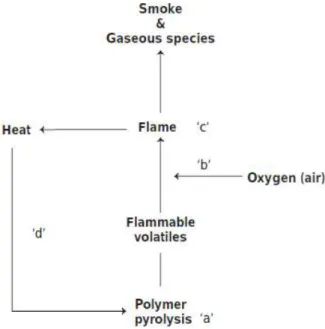
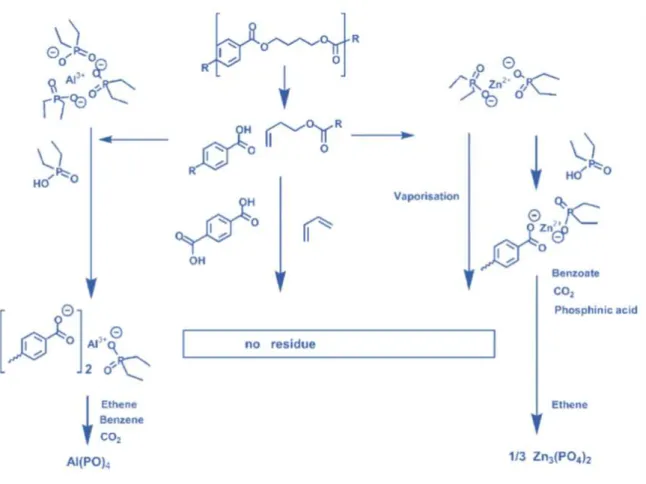
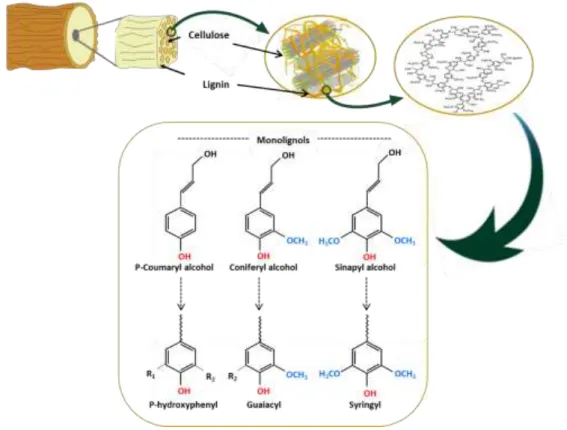
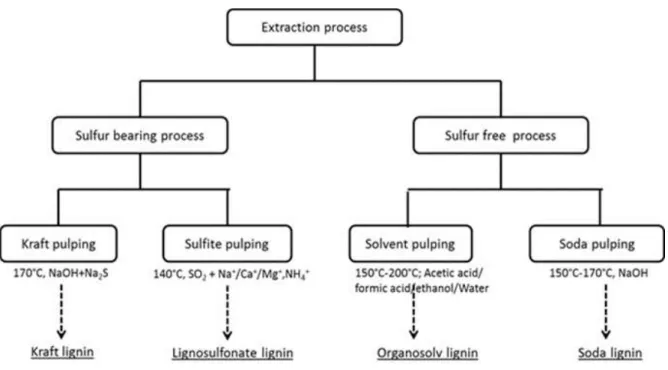
Documents relatifs
triggered by September 2001 (one hesitates to imagine the state of the American body politic after a major terrorist attack every year for nearly a decade) contains
A genuine economic and monetary union requires establishing both a “fiscal centre” with fiscal capacity to meet the challenge of solidaristic reconstruction and transformation of
Ein verwandt- schaftliches Empfinden ergab sich vor allem aus dem gemeinsamen Status einer Republik, aber auch aufgrund der ähnliehen politischen Institutionen und
In the Falck case, the far-sighted family champion of change Alberto Falck—with crucial support of the external CEO Achille Colombo—was able to de-escalate the family business
C’était le moment choisi par l’aïeul, […] pour réaliser le vœu si longtemps caressé d’ accroître son troupeau que les sècheresses, les épizoodies et la rouerie de
L’archive ouverte pluridisciplinaire HAL, est destinée au dépôt et à la diffusion de documents scientifiques de niveau recherche, publiés ou non, émanant des
l’utilisation d’un remède autre que le médicament, le mélange de miel et citron était le remède le plus utilisé, ce remède était efficace dans 75% des cas, le
“[m]ore so than any other American author of the twentieth century, Pynchon documents in fiction the tectonic movements of American history, to the extent that
